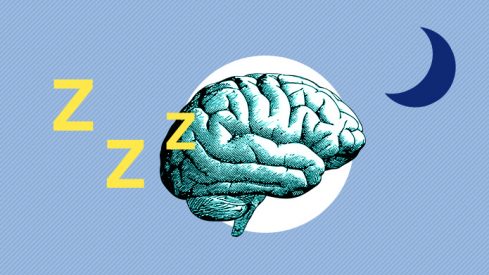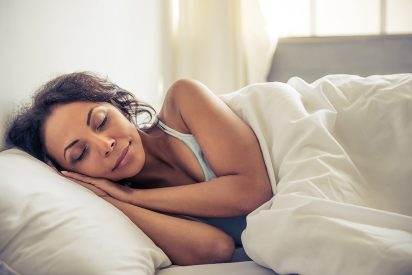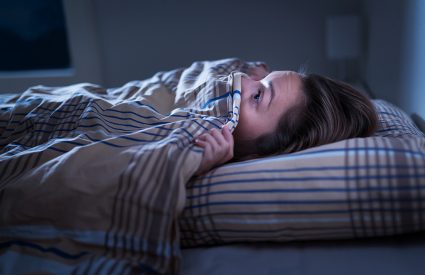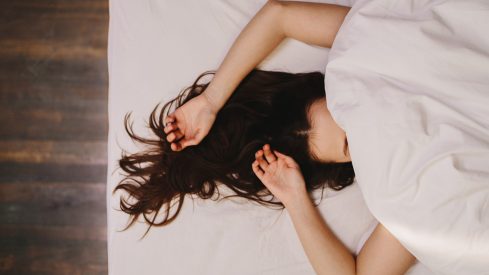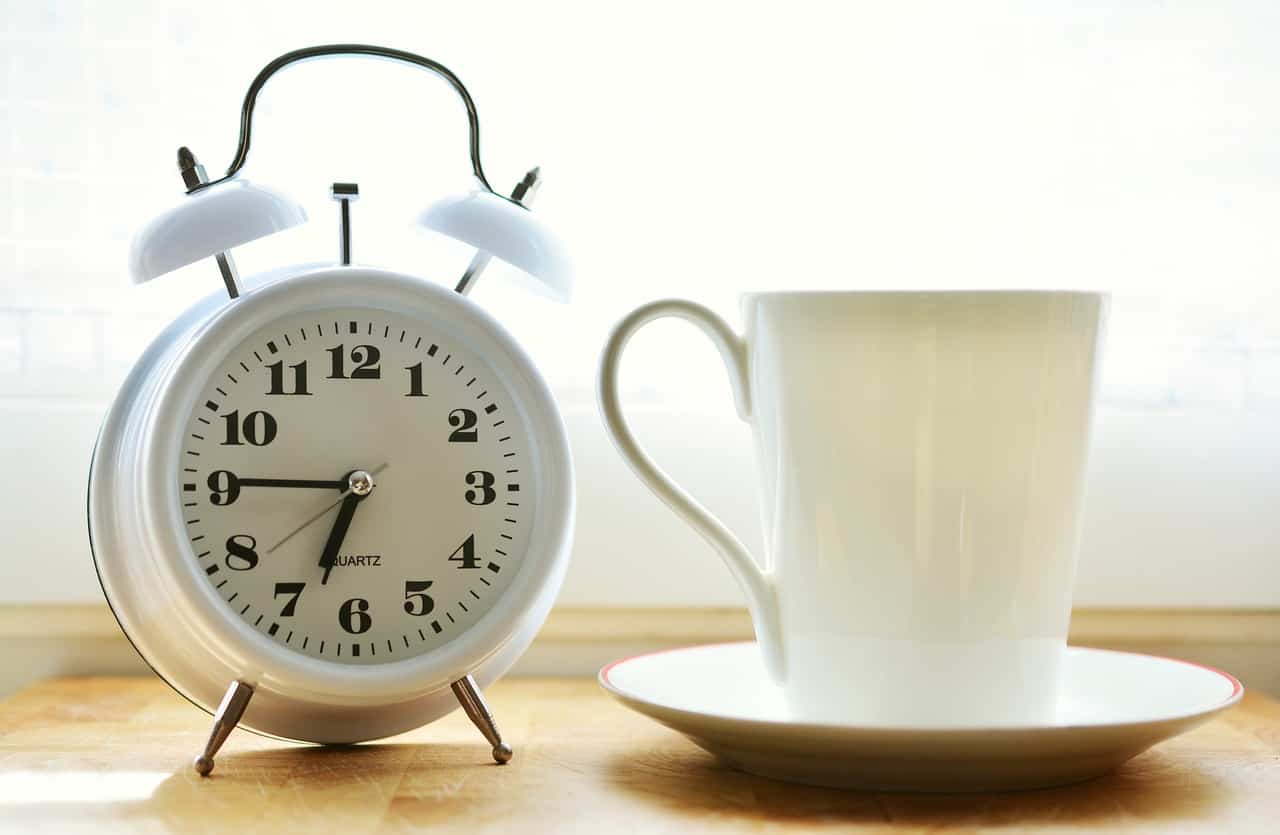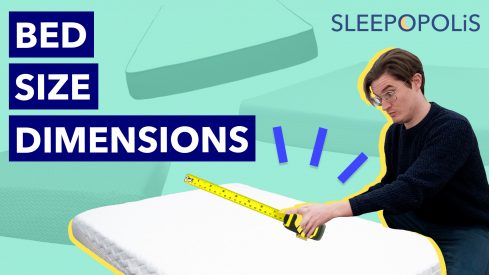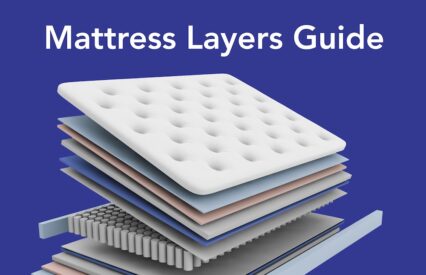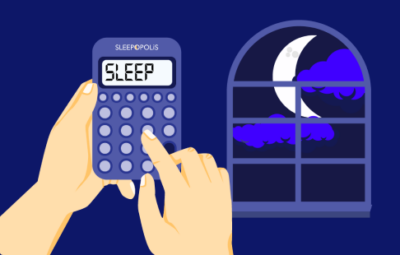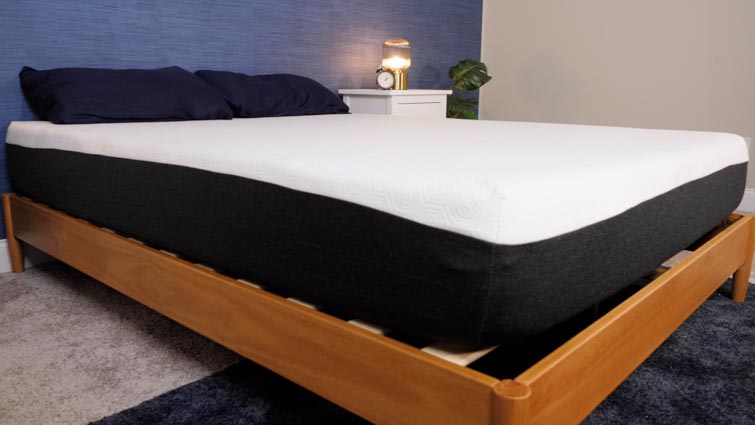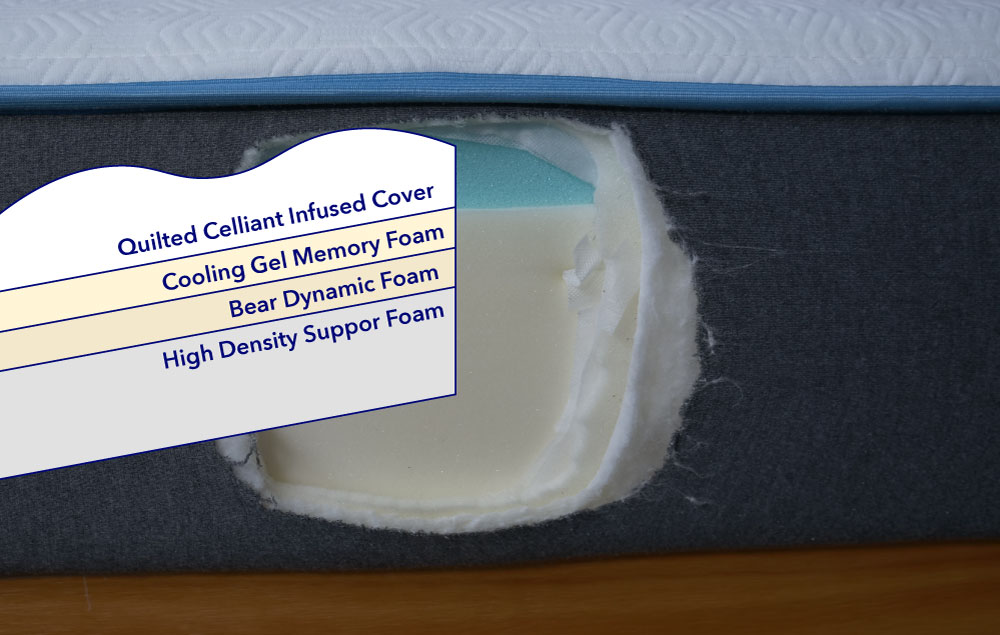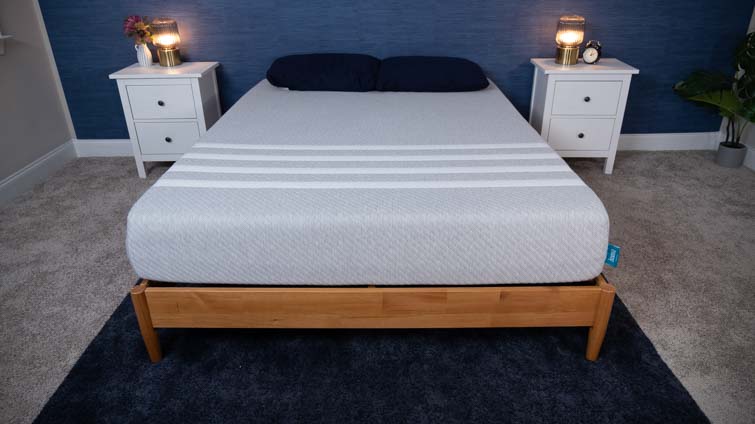Since its founding in 2015, Bear has been on a mission to help people get better rest. While anyone can buy a Bear mattress, the company has carved out a unique niche in the mattress industry using a team of sponsored athletes, medical professionals, and fitness enthusiasts to target active folks seeking muscle recovery. Today, we’ll be taking a deep dive into its flagship model — the Bear Original mattress.
I’ve been testing and reviewing mattresses for three years at Sleepopolis. Since 2014, our team of expert testers and certified sleep science coaches has tested more than 330 mattresses in our Charlotte, NC studio. We’ve helped a total of 60,108 people find the best mattress for them based on our medically reviewed testing methodology.
We work closely with a network of sleep specialists and medical professionals, including board-certified doctors, registered nurses, physical therapists, and chiropractors. These experts review our findings and ensure we are making accurate recommendations based on the latest in sleep science. We work especially closely with our Chief Medical Advisor, Dr. Raj Dasgupta MD, FACP, FCCP, FAASM, who provides our readers with expert medical advice based on their sleep preferences.
When we tested the Bear mattress, we found it most compatible with back and stomach sleeping due to its medium-firm feel that leans slightly firm. It stood out the most in our motion isolation and cooling categories, making it a good choice for couples and hot sleepers alike.
Even though it’s made entirely of foam, the Bear has a firm, supportive feel that should be sturdy enough for back sleepers and stomach sleepers alike. Additionally, combination sleepers should be able to easily move around on its surface. You can also pay extra for a Celliant cover that may help with cooling and muscle recovery. Learn more in our video review.
What our tester says:
“While the Bear offers a bit of cushioning from the memory foam comfort layer, we felt a lot of lift from deep within the mattress. This firmer-than-average feel and construction provided the best spinal alignment, pressure relief, and comfort in the back- and stomach-sleeping positions.” – Riley Otis, staff writer and certified sleep science coach
Bear Mattress Overview
The Bear Original is a 10-inch tall mattress made entirely from foam. In terms of firmness, we rated it a 7 out of 10 on our firmness scale. While it offers a bit of cushioning from the memory foam comfort layer, we felt a lot of lift from deep within the mattress. This firmer-than-average feel and construction provided the best spinal alignment, pressure relief, and comfort in the back- and stomach-sleeping positions.
The bed comes with a breathable quilted cover that’s soft and smooth. For an additional cost, you can upgrade the mattress to a Celliant cover. According to Bear, this phase-change material helps with muscle recovery by transforming your body heat into waves of energy. While we haven’t verified the results of Bear’s clinical trials, we can confirm that this cover helps with cooling.
During our testing, we found great cooling results and awarded the Bear 4.5 stars in this category. The surface of the bed has a nice cool-to-the-touch feel that doesn’t immediately fade upon lying down. We also noted exceptional motion isolation, which earned it 4.7 stars and suggests you’re unlikely to feel a restless partner tossing and turning beside you throughout the night. When we combined all of our testing scores together, the Bear Original mattress earned 4.5 stars overall.
Bear Mattress Review Video
For a glance at the Bear, watch our Bear mattress review video. Keep in mind, we recently retested this mattress, so our current scores may not reflect those in the video.

Bear Mattress Sleepopolis Scores
Bear Original Mattress Comparison
- Nectar Mattress – Better for heavy sleepers
- Leesa Original Mattress – Deeper sinkage
- Bear Star Hybrid Mattress – Hybrid alternative from Bear
- Bear Elite Hybrid Mattress – Best luxury model
| Rating |
|
|
|
|
|
|---|---|---|---|---|---|
| Firmness |
Firm: 7/10
|
Medium-firm: 6.5/10
|
Soft: 5.5/10
|
Medium-soft: 6/10
|
Multiple firmness options
|
| Material |
Foam
|
Foam
|
Foam
|
Hybrid
|
Hybrid
|
| Cooling |
|
—
|
—
|
|
|
| Best For |
Back Sleepers, Stomach Sleepers, Hot Sleepers, Hip Pain
|
Side Sleepers, Back Sleepers, Stomach Sleepers, Back Pain, Couples
|
Side Sleepers, Back Sleepers, Stomach Sleepers, Seniors
|
Side Sleepers, Back Sleepers, Hot Sleepers, Joint Pain
|
Side Sleepers, Back Sleepers, Hot Sleepers, Hip Pain, Seniors
|
|
|
Bear Value
When we assess the value of a mattress, we take a look at its materials and whether their quality and the bed’s performance match the price. All the foam inside the Bear is CertiPUR-US certified, meaning it’s free from fiberglass, heavy metals, harmful chemicals, and ozone-depleting substances. The entire bed is also GREENGUARD Gold certified and complies with rigorous standards for chemical emissions and indoor air quality. You can learn more about this in our full mattress certifications guide.
The Bear Original comes at a very affordable price point and is a great budget buy. Before discounts, you can find a queen size for $998. Even though it’s a mattress under $1,000, it still earned more than 4 stars on the majority of our performance tests and contains high-quality materials. Therefore, we think this bed has an excellent value.
When we evaluate what’s inside a mattress, we actually look inside the mattress. We use a box cutter to cut into the side of the bed and examine the materials layer by layer.
The Bear Original mattress is 10 inches tall and sports an all-foam construction. This bed contains three layers of foam — one made from memory foam and two made from polyfoam, which is firmer and has a quicker response to pressure. As mentioned, these foams are CertiPUR-US certified, which ensures they are safe for human contact and don’t contain any heavy metals or harmful chemicals. Again, you also won’t have to worry about fiberglass in this bed, as it’s also been GreenGuard Gold Certified.
As a bed-in-a-box mattress, the Bear ships directly to your door compressed in a box. All you need to do is open the box, unroll the bed, and allow it to fully inflate. You may experience a slight off-gassing scent as the bed rises, but this should dissipate within 24 hours.
Bear Mattress Firmness
Firmness can be a subjective factor— what feels soft to one sleeper may feel firmer to a sleeper with a different body type, sleeping position, and feel preference. To rate firmness without bias, we ask multiple certified sleep science coaches to lie on the mattress in all three sleeping positions and then provide a firmness score. We then find the average of everybody’s individual score to create our final firmness rating. Our firmness scale goes from 1 to 10, where 1 is the softest and 10 is the firmest. We consider a score of 6.5 out of 10 to mark a true medium-firm feel.

The Bear Original mattress falls at a 7 out of 10 on the firmness scale, making it a medium-firm bed that leans slightly firmer. While the memory foam comfort layer provides a bit of cushioning, the two layers of polyfoam lift the sleeper up and out of the mattress. When I lay down on the Bear, I felt more “on” the bed than “in” the bed.
I found this mattress most comfortable in the back-sleeping position. It does a nice job balancing support and pressure relief to promote proper spinal alignment while still providing some cushioning at the hips and lumbar region. I also think lightweight stomach sleepers will find enough firm support to prevent their hips from dipping, which prevents lower back pain.
Bear Mattress Performance
What’s inside a bed and how it feels are two crucial factors to consider. However, they’re not the only elements that come into play. I tested the Bear mattress in our Sleepopolis studio with help from my fellow testers Asha Birjah, Caine Wilkes, Erin Chiles, and Meredith Day to assess it for pressure relief, motion isolation, responsiveness, cooling, and edge support.
We performed both objective and subjective tests to help us understand how the mattress may feel for different kinds of sleepers, which allows us to make very specific recommendations. Below, I’ll go over each test and how the Bear performed.
Bear Pressure Relief Performance
When we talk about pressure relief, we’re assessing how evenly our weight is distributed across the mattress, as well as how much cushioning we’re getting at our hips and shoulders. When it comes to mattresses, Dr. Dasgupta says improper support or low quality materials can cause discomfort at these sensitive pressure points.
We test pressure relief in our studio using a specialized mat that senses pressure. We roll it onto the bed, then lie on it in the back- and side-sleeping positions. The results are then translated into a visual graphic using color-coded thermal imagery. Areas displaying blue and green indicate good pressure relief, while yellow and red suggest more pressure building.
The mat also shows each sleeper’s average pressure in PSI, which stands for pounds per square inch. This gives us a quantitative look at how evenly their weight is distributed, as we compare this number to the overall average mattress PSI for each position. The average mattress PSI is 14.9 in the side-sleeping position and 12.4 in the back-sleeping position, so we want to see equivalent or lower PSI scores from our testers.
Speaking of our testers, we enlist testers from different weight classes to perform our pressure map test to get a better understanding of how the bed performs for different body types. Your body type is one of the main factors that determines how much pressure relief you’ll experience on a mattress. For example, heavy sleepers weighing more than 230 pounds typically sink further into a bed’s layers and experience them as softer than average. Lightweight sleepers weighing under 130 pounds usually only get cushioning from the top layer, as they don’t sink as far into the other layers.
When we performed the pressure mat test on the Bear mattress, we found an average pressure relief score of 3.5 out of 5 stars in both the side- and back-sleeping positions.
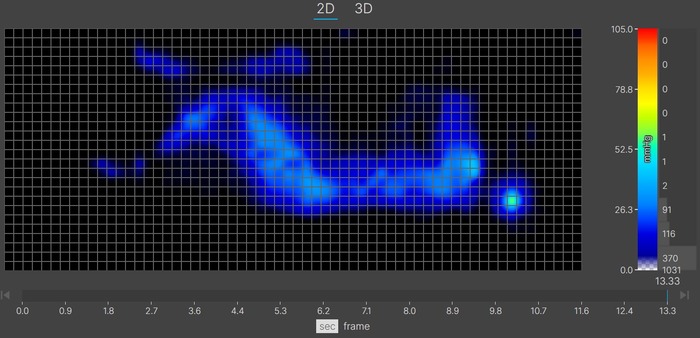
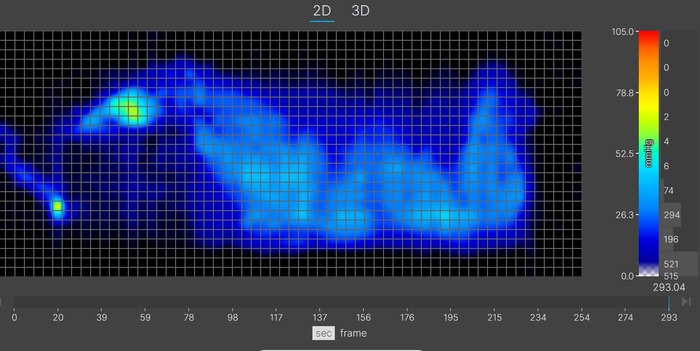
When side sleeping, our lightweight and heavy testers had average PSI scores of 9.8 and 14.7, respectively. While these are both lower than the overall side-sleeping average PSI of 14.9, our testers said they didn’t love how the mattress felt in this position. Lightweight tester Asha Birjah said, “I’m not getting a lot of sinkage or contouring. I do feel a little bit of pressure building on my shoulder, but it’s not painful.” Caine Wilkes, our tester who falls into the heavier category, echoed the shoulder pressure statement, as well as noting a bit of pressure at his hips. If you’re a side sleeper who prefers a firmer feel, you may like this bed, but most side sleepers will need a mattress with a touch more cushioning at the shoulders.
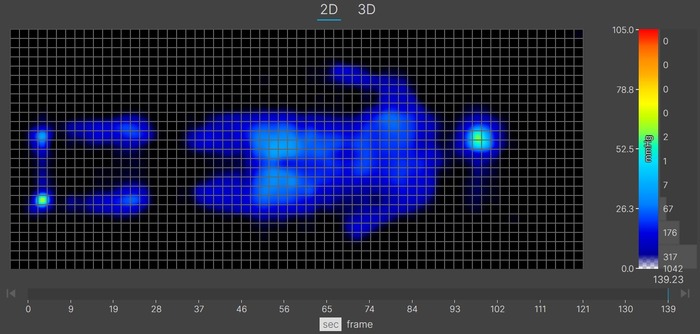
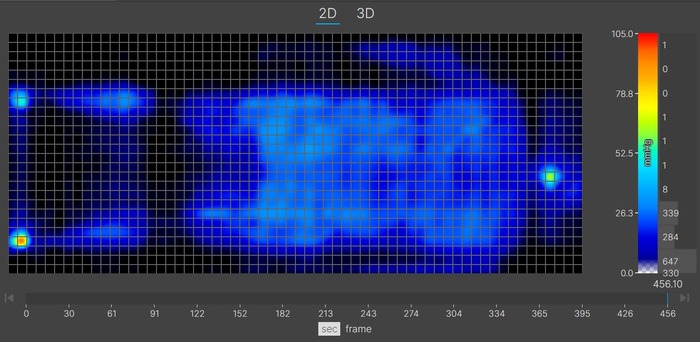
Our testers felt more comfortable when lying on their backs. Asha, our lightweight tester, had an average PSI of 11.4 and found excellent spinal alignment. While she felt more “on” the bed than “in” it, she still experienced some cushioning at her lower back that filled in the gap at her lumbar region. Caine experienced more pressure on this bed and had a PSI of 13.1. This is a touch higher than the average PSI in this position, 12.4, and he noted finding a lot more sinkage in this position. He felt supported at the lumbar region, but didn’t feel his spine being propped into alignment, saying, “My hips are sinking in more than my shoulders.”
Based on this test, we recommend the Bear mattress to lightweight and average-weight back sleepers. These folks should find enough support to keep their hips and shoulders aligned, while still getting enough cushioning at the lower back. Some side sleepers may enjoy the Bear’s firm feel, but those with sensitive hips and shoulders may not find enough sinkage to prevent pressure forming at these areas.
Bear Motion Isolation
Couples may want to pay close attention to motion isolation, especially if one or both partners sleep lightly or tend to toss and turn. In this test, we evaluate whether or not a mattress is able to absorb motion on impact and prevent the sleeper on the other side from feeling it. Dr. Dasgupta emphasizes the importance of motion isolation when sharing the bed, as continuous sleep disturbance minimizes your overall rest and restoration. We test motion isolation using a ripple test and a partner test. The Bear mattress performed exceptionally well on both, earning an overall score of 4.7 out of 5 stars.
First up is the ripple test. We begin by placing a full tub of water on one side of the mattress, then climb in and out of bed on the other side and rolling around a bit. We then observe the movement of the water and whether it ripples slightly or sloshes aggressively. When I performed this test on the Bear, I was very impressed with the results. The water was very still with no noticeable splashing in the tub when I got in and out of bed and switched sleeping positions. I ended up giving this test 5 stars because my movement barely affected the water, indicating the Bear was absorbing my motion.

Next, I performed the partner test. I put on a blindfold and lay down where the water tub was. My colleague got in and out of the bed and rolled around next to me. I could detect a very slight disturbance while my partner was moving around, but it wasn’t enough to jostle my body around. I could tell someone applied pressure to the other side of the bed, but I couldn’t identify exactly what they were doing over there. I also had no sense that my partner had gotten out of bed at one point, which I found impressive. I gave this test 4 stars overall because while I did feel a bit of motion, I don’t think it was jarring enough to wake someone up.
Based on these results, I think the Bear is a great choice for anyone who shares the bed with a partner. Even if you’re a light sleeper, you’ll likely be able to sleep next to a restless sleeper without feeling disturbed.
Bear Responsiveness
Responsiveness refers to how quickly the bed returns to its original shape after pressure has been applied. Typically, memory foam mattresses have a slow response to pressure, and it takes longer for the bed to bounce back. However, we found some good responsiveness from the Bear, so we awarded it 4 out of 5 stars. This score is based on its performance in four separate tests, which I’ll get into below.
Switch test: First, we observe how easy it is to move around on the mattress and switch between sleeping positions, which is especially important for combination sleepers. When I switched from my back to my side to my stomach, I found it fairly easy. Since the bed is firmer without a lot of sinkage, I never felt trapped in the foam or like it was inhibiting my mobility. However, this bed offers little to no bounce, which would have helped me move from one position to the next, so I settled on 4 stars for this test.
Responsiveness test: Next, we perform an objective test to collect quantitative data on the mattress’s response time. I started by placing a 53-pound kettlebell onto the mattress for seven seconds to allow it to fully sink in, then pulled it straight up. Using a stopwatch I recorded how many seconds it took for the bed to return to form. It took over two seconds for the memory foam to fully rise, so I had to rate this test 1 star. In comparison, its competitor, the Nectar Classic, took 1.5 seconds to bounce back, earning 3 stars for this test. This indicates the Bear’s memory foam comfort layer has a slower response to pressure and will “remember” your body’s weight as you move around, which may inhibit mobility.
Sinkage test: This test measures exactly how much sinkage a mattress offers. I placed the 53-pound kettlebell back on the mattress and used a ruler to measure how far it sank in. I found 3 inches of sinkage, which is pretty consistent with the 3.3-inch average across all mattresses we’ve tested. This qualifies as moderate sinkage, earning the Bear 5 stars. You’ll find a bit of cushioning around your joints, but you won’t experience intense body contouring since your body is lifted up and out of the structure.
Bounce test: This fun test quantifies how bouncy a mattress is. I climb up a ladder until I’m 6 feet above the mattress, and then drop a 25-pound steel ball onto its surface. A yardstick on the wall allows us to examine how high the ball rebounds. On the Bear, the ball bounced 9.5 inches into the air, which is a lot lower than the 15.8-inch average. Although this is little bounce, it’s not no bounce, so I gave this test 3 stars.
Bear Cooling
If you’re a hot sleeper who fights to stay cool at night, you understand the struggle of waking up sweaty and overheated. Lucky for you, some mattresses are now made with materials and constructions that promote breathability and airflow to help regulate your body temperature. I tested cooling on the Bear using a thermal gun test, a cover test, and a feel test to create a final cooling score of 4.5 stars.
Thermal Gun test: This test allows me to see how a mattress responds to my body heat and how well it regulates temperature. I started this test by using a thermal gun to record the initial temperature of the mattress. Then, I lay down on it for a full 5 minutes. When the time was up, I used the thermal gun to record the bed’s temperature again and calculated the difference. If the temperature increases by fewer than 5 degrees, we consider it to have excellent cooling. An increase of 5 to 10 degrees indicates good cooling, 10 to 15 degrees indicates decent cooling, and more than 15 degrees indicates poor cooling.
The Bear’s temperature went from 66.6 degrees to 71.9 degrees after I lay on it for 5 minutes. This is a 5.3-degree temperature increase, which is classified as good cooling. Keep in mind, it’s on the higher end of the “good cooling” requirement and only 0.3 degrees away from the “excellent” cooling category.

Cover test: This test is pretty simple. I felt the surface of the Bear and observed whether it had a cool-to-the-touch sensation when I first lay down. I definitely thought the cover felt cool when I placed my hand on it, and I could feel this sensation across my entire body when I was lying on it.
Feel test: As I rested on the Bear for 5 minutes, I paid attention to how the bed felt beneath my body and whether I could feel it heating up. I could feel the bed adjusting to my body heat, but it never felt noticeably warm. It remained cool throughout the entire test, which is impressive for an all-foam mattress and suggests hot sleepers won’t have any issues on this bed.
Bear Edge Support
Edge support is exactly what it sounds like — how supportive the edge of the mattress is. When a bed has a sturdy perimeter, you’re able to use the entire surface of the bed and sleep right up to the edge without falling off. This is great for couples, as it allows both partners to spread out and makes the bed feel bigger. Older adults and people with mobility issues are also able to rely on strong edges to make getting in and out of bed easier. Ideally, the edges of a mattress should be just as supportive as the very center. To assess the Bear’s edges, we performed a tape measure test, a seated test, and a full body test to create a final score of 4.2 stars.
Tape Measure test: Before we begin this test, we take weighted plates and create three stacks. The weighted stacks go from 99 pounds to 154 pounds to 198 pounds, which simulates three different body types. We then place each stack on the very edge of the bed and use a tape measure to record how much the edges collapse under the weight.
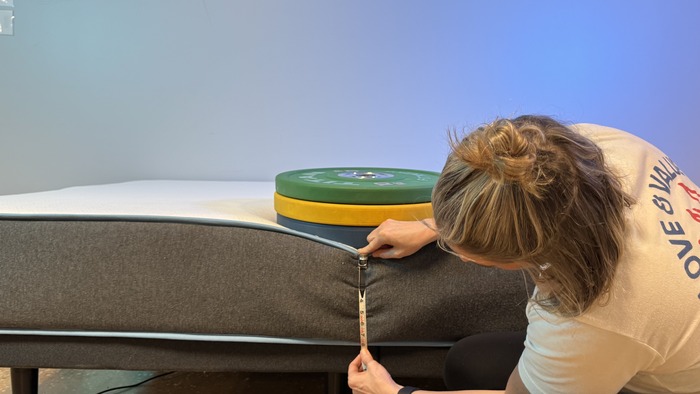
From lightest to heaviest, the sinkage went from 2 inches to 3 inches to 4 inches. The mattress has a 10-inch profile, so this isn’t enough sinkage to cause concern. When we combine the ratings from all three stacks, we get an average score of 4.7 for this test.
Seated test: Next, I sat down directly on the edge with my feet planted on the floor. I observed how much sinkage I felt and whether I felt at risk of falling off. I thought the seated edge support was solid, but I wouldn’t say it was great. I did notice some sinkage beneath me, yet I still felt secure and stable. Since this bed doesn’t offer a lot of bounce, I did have to use more effort when standing up from this position. I ended up giving this test 3 stars because the edge support was just average — not great, but not terrible either.
Full body test: Next, I lay down near the edge on my back, side, and stomach. I felt more stable when lying down and experienced less sinkage. When I was on my back and stomach, I did notice a difference in support — the side of my body closest to the center of the bed felt more lifted, while the side closer to the edge felt more sinkage. However, this difference was very slight, and I never felt at risk of slipping off the bed, so I gave this test 4 stars.
Bear Mattress Performance for Couples
Cooling, responsiveness, edge support, and motion isolation are the most important categories for couples to pay attention to. The Bear earned 4 stars or higher in each of these categories, so I think it’s one of the best mattresses for couples.
Couples tend to experience overheating because two bodies heat up quicker than just one. However, this bed earned 4.5 stars for cooling, so you shouldn’t have to worry about sweaty nights. It’s fairly easy to move around on this bed due to its 4-star responsiveness, so sexually active couples can switch between positions without feeling trapped in the foam layers. I also think couples should be able to spread out and enjoy the whole surface of the mattress based on its 4.2-star edge support. Finally, you won’t need to worry about being awakened by your partner’s tossing and turning, as we found excellent 4.7-star motion isolation on the Bear mattress.
Other Performance Factors to Consider
The above tests covered a lot, but there’s more to learn about the Bear’s performance. Below, I’ll provide further insight into how it performed on a few more important tests.
Sex
Our score for sex is based on the average of the responsiveness, cooling, and edge support tests. Typically, the best mattress for sex is responsive enough to aid the switching of positions, cool enough to prevent overheating, and has strong edges that can be relied on regardless of where you are on the bed. Based on its 4-star responsiveness, 4.5-star cooling, and 4.2-star edge support, this bed earned 4.2 stars for sex. This makes it a solid pick, but I do think a bit more bounce would help couples better move from one position to another faster.
Noise
Our tester Meredith Day tested the Bear for noise and gave it 4 stars in this category. She said, “The foam is definitely releasing air when I press down, which creates a slight noise. When I roll around, I can hear the slightest bit of crunching from the foam beneath my ear, but it’s not overly distracting or loud.”
Base Compatibility
Meredith also tested the Bear’s compatibility with an adjustable base and gave it 3 stars. When nobody was on the mattress, it did not properly conform to the base. She also noticed the bed beginning to slip down off the base when just the head was lifted. However, she thought the bed conformed well when a person was on the bed, especially in the zero-gravity position. We think you’ll be able to use the Bear on an adjustable base, but you may not be able to fully lift the head and legs to full elevation.
Durability
When you buy a new mattress, the plan is to sleep on it for a long time. To ensure you get many years of use out of your bed, we evaluate its durability by looking at its materials, support, edge support, and warranty. A strong support system and solid edge support help keep the mattress standing tall without the risk of premature sagging. We also find high-quality materials to be more durable and longer lasting than cheap materials, which can break down over time. Finally, we glance at the warranty, as it gives us some perspective on how long the company expects its mattress to hold up.
Overall, I found the Bear to be durable, but I don’t necessarily think it’s the most durable bed on the market. That’s because its main support system is a thick layer of high-density foam. Since there are no steel coils inside, it’s possible that indentations and sags could form in the memory after years of use. Additionally, the Bear’s edges earned 4.2 stars, but they aren’t the strongest I’ve ever tested. The materials seem high quality based on their CertiPUR-US and GREENGUARD Gold certifications, but they’re still mostly made from polyfoam, a cheaper material that’s more likely to develop indentations over time. The bed comes with a limited lifetime warranty, which suggests Bear expects it to last for multiple decades. I think you’ll be able to use this bed for many years, but I would advise sleepers to look out for sagging and take advantage of that warranty.
Bear Performance Scores
| Test | Product Score | Average Score |
| Firmness | 7 | 6.7 |
| Pressure Relief Side | 3.5 | 3.5 |
| Back Pressure Relief | 3.5 | 4 |
| Motion Isolation | 4.7 | 4 |
| Responsiveness | 4 | 4.2 |
| Cooling | 4.5 | 4.1 |
| Edge Support | 4.2 | 4 |
| Bounce Height | 9.5 inches | 16.3 inches |
| Bounce Rating | Moderate | Moderate |
| Sinkage | Moderate | Moderate |
| Sex Score | 4.2 | N/A |
| Noise | 4 | 4.5 |
| Off-Gassing | N/A | N/A |
| Trial Period | 4 | 4.3 |
| Warranty | 4.5 | 4.6 |
| Full Rise | N/A | N/A |
| Unboxing/Moving | N/A | 3.5 |
Bear Sleeping Position and Body Weight
The position you sleep in and how much you weigh are two of the most crucial elements that will determine whether you are compatible with a mattress. For example, what feels medium-firm to a back-sleeping sleeper of average weight could feel too firm to a lightweight side sleeper or too soft for a stomach sleeper over 230 pounds. To take bias out of the equation, we had testers from all three weight classes try the Bear mattress in each sleeping position. Simply look for your body type and preferred sleeping position below to get an idea of how this bed may feel for you.
Before we dive into our recommendations, though, we want to recognize that people come in all shapes and sizes, and people of every size deserve a mattress that works for their body type. We use the weight categories light, average, and heavy to more easily categorize sleepers based on how mattresses will perform for their body type, as most mattresses are designed for the group we call “average” (130 to 230 pounds).
As a general takeaway, lighter sleepers don’t require as much support as average-weight sleepers, and mattresses will tend to feel firmer to them. On the other hand, heavy sleepers tend to need more support than average-weight sleepers and tend to sink into the mattress more. As far as sleeping positions go, side sleepers tend to need a softer mattress while stomach sleepers usually need a firmer, more supportive one. Back sleepers are usually somewhere in the middle.
Is the Bear a Good Mattress for Light Sleepers (Under 130 pounds)?
- Light Back Sleepers – These sleepers should find excellent comfort and spinal alignment on the Bear, with some slight cushioning that fills in the gap at the lower back.
- Light Side Sleepers – We don’t recommend the Bear to these sleepers, as it’s a touch too firm to contour around the hips and shoulders.
- Light Stomach Sleepers – These folks should find plenty of lift at the hips in this position to keep the spine in a straight line.
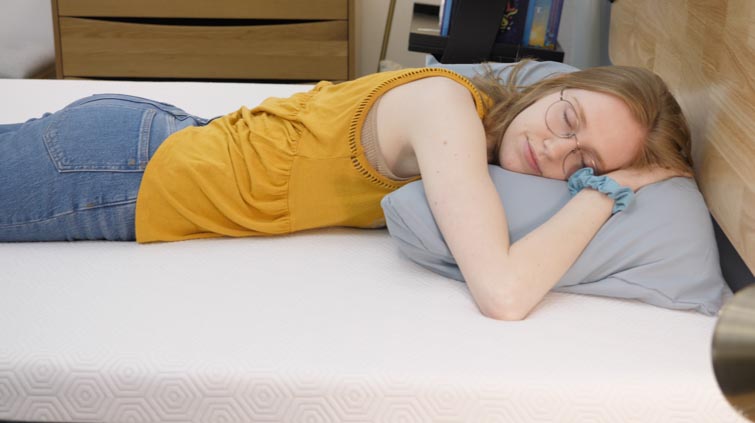
Is the Bear a Good Mattress for Average-Weight Sleepers (130–230 pounds)?
- Average-Weight Back Sleepers – The medium-firm feel should keep the hips and shoulders aligned in this position while still offering a bit of cushioning at the lumbar region.
- Average-Weight Side Sleepers – Side sleepers who prefer a firmer feel may like the Bear, but those with sensitive joints should seek a bed with more sinkage and cushioning.
- Average-Weight Stomach Sleepers – These sleepers should find a bit of cushioning at their hips that provides comfort without allowing them to dip below the shoulders.
Is the Bear a Good Mattress for Heavy Sleepers (over 230 pounds)?
- Heavy Back Sleepers – We don’t think the Bear is quite supportive enough to promote proper spinal alignment for larger-bodied sleepers in any sleeping position. They’re likely to sink too far into the mattress, causing their hips to dip below the shoulders and prevent the spine from remaining straight.
- Heavy Side Sleepers – See above.
- Heavy Stomach Sleepers – See above.
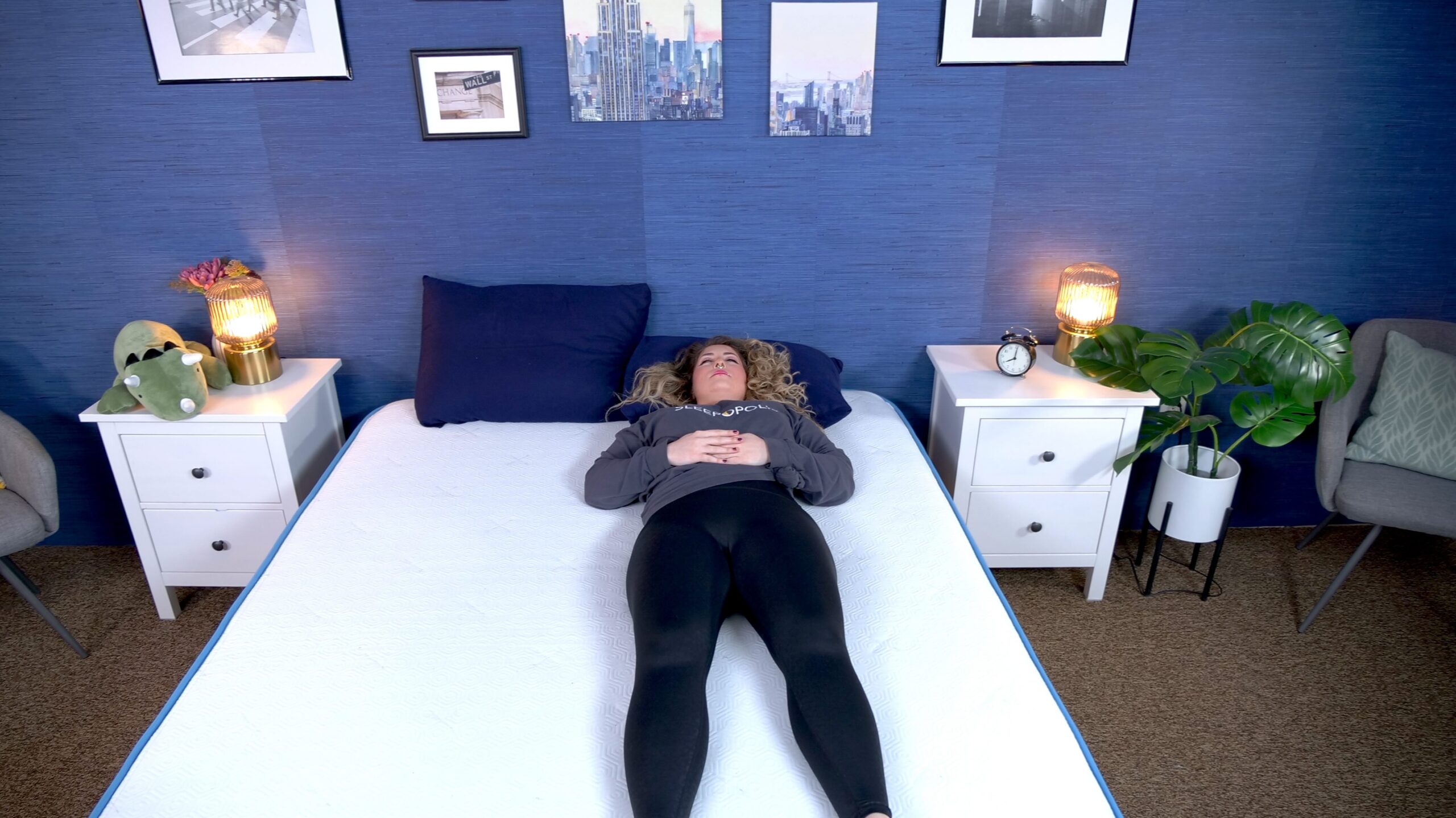
My Final Thoughts About the Bear Mattress
Now that we’ve gone through every test we performed on the Bear, let’s take a quick look at some of my favorite things about the mattress, as well as some callouts about its flaws.
Who I Recommend the Bear For
- Couples should be able to sleep through the night without feeling disturbed by a restless partner.
- This bed is very affordable, making it a good choice for budget shoppers.
- The medium-firm feel helps promote spinal alignment in lightweight and average-weight back sleepers.
- Active folks seeking muscle recovery may benefit from paying extra for the optional Celliant cover, which Bear says helps promote blood flow.
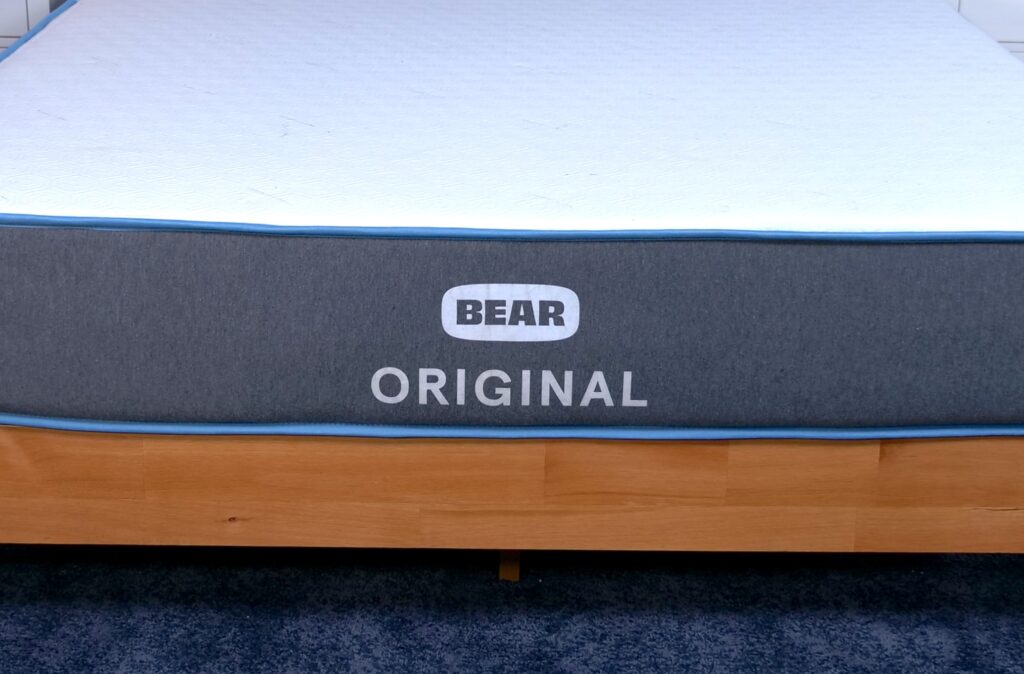
Who I Don’t Recommend the Bear For
- Heavy sleepers over 230 pounds will need a mattress with a stronger support system to prevent too much sinkage.
- Most side sleepers won’t find enough soft cushioning and body contouring around their hips and shoulders, which could lead to pressure buildup.
Bear Pricing and Sizing
Price is an important part of the buying decision for most sleepers, and the Bear is a very affordable option. The brand also runs frequent sales, so you’ll likely find this bed for even cheaper. Let’s take a look at what sizes are offered and how much each costs.
| Size | Price (Standard Cover) | Price (Celliant Cover) |
| Twin | $699 | $949 |
| Twin XL | $805 | $1,100 |
| Full | $875 | $1,125 |
| Queen | $998 | $1,298 |
| King | $1,304 | $1,604 |
| California King | $1,304 | $1,604 |
| Split King | $1,690 | $2,190 |
Bear Policies
Reading the fine print is important for any major purchase. Let’s take a look at the Bear’s company policies.
| Warranty | Limited lifetime warranty |
| Sleep Trial Period | 120 nights |
| Shipping/Returns | Free shipping within the contiguous United States. Free returns within the sleep trial period. |
| Unboxing | The bed ranges from 50 to 90 pounds depending on the size, so you may need an extra set of hands to help you unbox. |
| Full Rise | The begin immediately begins to inflate after unboxing and may take 24-48 hours to fully decompress. |
| Customer Reviews | This bed earned 4.7 stars on Bear’s website based on 10,700+ customer reviews. |
Bear vs. Competitors
There are many great all-foam bed-in-a-box mattresses on the market, so you may be wondering how the Bear compares. Below, I’ll provide a quick guide to how the Bear stacks up to one of its memory-foam competitors.
Bear Original vs Nectar Classic Memory Foam
The Nectar Classic Memory Foam mattress is similar to the Bear Original in terms of its construction, motion isolation, responsiveness, edge support, and cooling. Both are classified as medium-firm beds, with the Bear leaning just a touch firmer than the Nectar.
- Price: The Bear is the more affordable bed of the two, but both are reasonably priced.
- Sleeping position: Both mattresses are most compatible with back and stomach sleeping.
- Cooling: Both mattresses earned 4.5 stars on our cooling tests.
- Body weight: The Nectar is a bit more supportive, making it a better choice for heavy sleepers.
Read more in our full Nectar Classic Memory Foam mattress review.
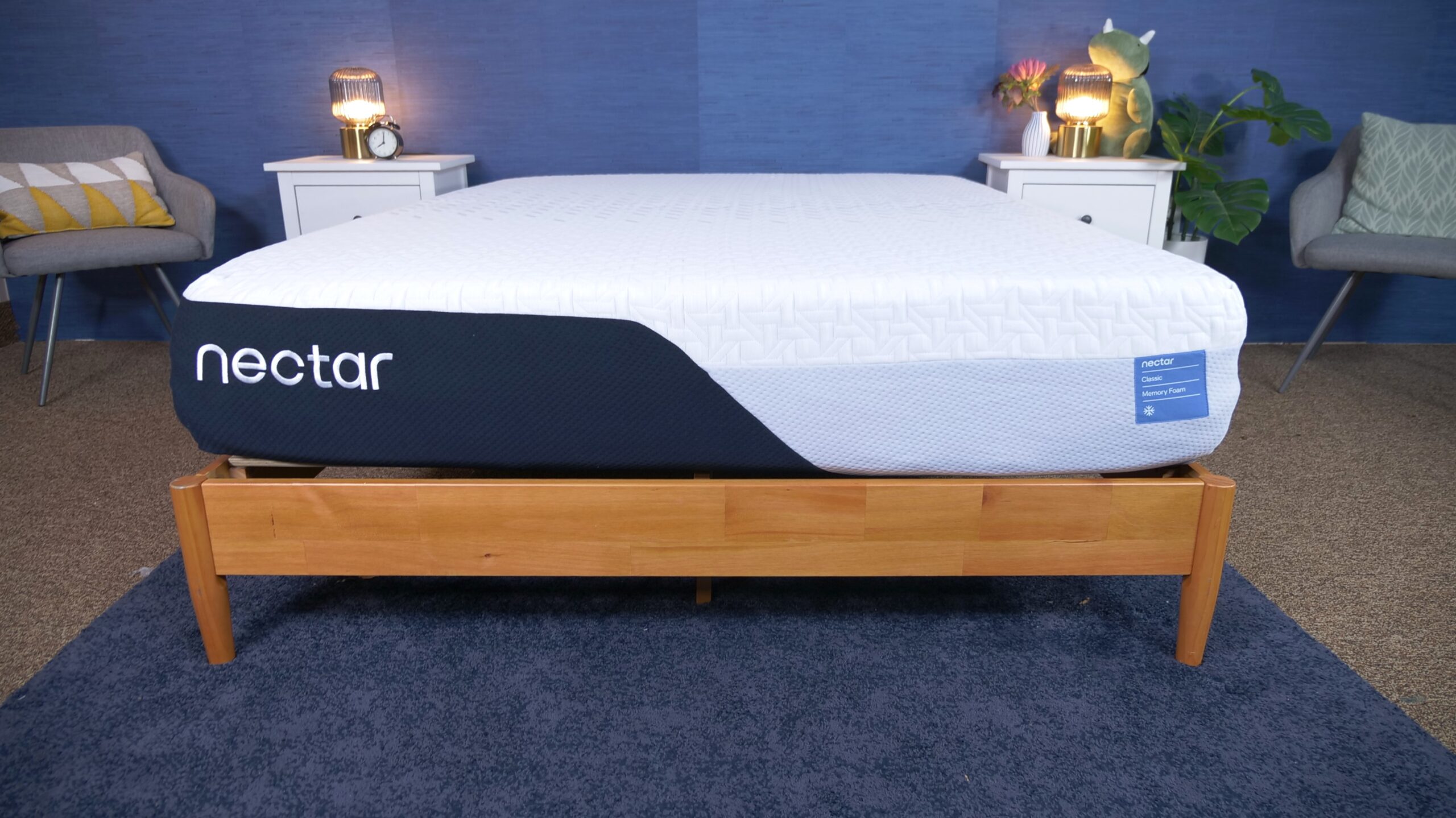
Nectar Mattress

Product Details
Our Recommendation
Financing Options
Financing options are available for this mattress.
Other Models from Bear
In addition to the Original model, Bear offers a few other mattresses with varying constructions and feels. Below, I’ll compare the Bear Original to the Bear Star Hybrid and Bear Elite Hybrid.
Bear Original vs Bear Star Hybrid
Where the Bear Original uses high-density foam as its support layer, the Bear Star Hybrid uses a layer of sturdy individually wrapped coils. These beds both fall at a 7 out of 10 on the firmness scale. We found the Star Hybrid to be more responsive with better edge support and weaker motion isolation.
- Price: The Bear Star Hybrid is significantly more expensive than the Original.
- Sleeping position: Both mattresses are best for back and stomach sleeping.
- Cooling: We found better cooling results on the Original Model. The Bear Star Hybrid earned 4 stars overall for cooling.
- Body weight: The Bear Star Hybrid is a better choice for heavy sleepers.
Read more in our full Bear Star Hybrid mattress review.
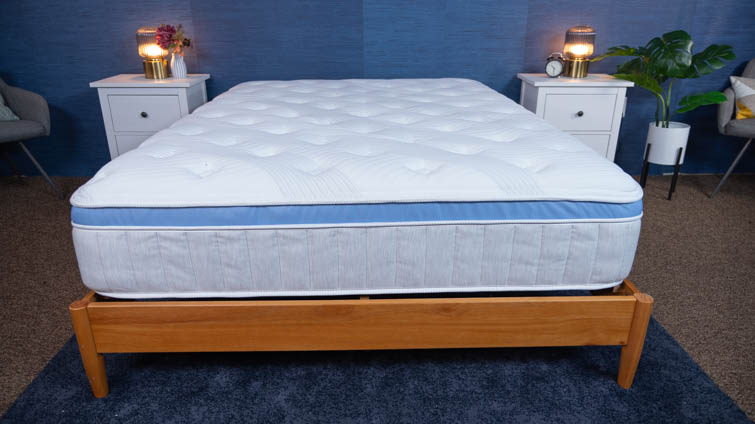
Bear Star Hybrid Mattress

Product Details
Our Recommendation
Financing Options
Financing options are available for this mattress.
Bear Original vs Bear Elite Hybrid
The Bear Elite Hybrid contains a layer of coils zoned for support, meaning their firmness fluctuates depending on where the body needs more support. This bed is also a luxury model that comes with a hand-quilted cushion cover. Both beds fall at a 7 out of 10 on our firmness scale.
- Price: As a luxury bed, the Bear Elite Hybrid is priced higher than the Bear Original.
- Sleeping position: Both mattresses are great for back sleepers. Side sleepers will likely appreciate the pillow top on the Elite Hybrid that helps cushion the hips and shoulder joints.
- Cooling: We found great cooling on both beds, giving them each a score of 4.5 stars.
- Body weight: The Bear Elite Hybrid is more supportive for heavy sleepers.
Read more in our full Bear Elite Hybrid mattress review.

Bear Elite Hybrid Mattress

Product Details
Our Recommendation
Financing Options
Financing options are available for this mattress.
Our Review Process
At Sleepopolis, our team of Certified Sleep Science Coaches personally test each mattress. We start by unboxing the mattress to figure out how difficult (or easy) it is to get the mattress from the box to the bed. Then, we spend time lying on the bed in different positions, taking time to assess it on our backs, stomachs, and sides. Next, we perform our Sleepopolis tests, using specialized tools to measure qualities like motion transfer, bounce, and pressure relief. Our last step is to open up the mattress and take a look at each layer. These steps allow us to give our final verdict on the mattress.
FAQs
How does the Bear mattress ship?
The Bear always comes with free shipping within the contiguous U.S. and will arrive at your door compressed in a box.
Does the Bear come with a mattress warranty?
Yes, this bed comes with a limited lifetime warranty.
Does the Bear mattress come with a trial period?
Yes, Bear offers a 120-night sleep trial period. You can return the mattress for free within this period.
Where are Bear mattresses made?
All Bear mattresses are manufactured in the USA.
What is Celliant?
Celliant is a phase-change material that’s designed to reflect infrared light in a way that can help improve circulation and regulate body temperature. Learn more in our Celliant Fiber explainer here.
Sources
- Celliant | Global Leader In Infrared Performance Textiles. (n.d.). CELLIANT | Global Leader in Infrared Performance Textiles. https://celliant.com/
- CLC Team. (2016). Home – CertiPUR-US. CertiPUR-US. https://certipur.us/
- Davis, B., Los, I., Merced, A., Riverside, San, San, D., Santa Barbara, F., Cruz, S., & Casden, S. (n.d.). Retrieved April 3, 2025, from https://cdn.shopify.com/s/files/1/0661/5815/files/Pilot-Sleep-Study-Dr.-Marcel-Hungs-2009-2010.pdf?3161
- Priego Quesada, J. I., Gil-Calvo, M., Lucas-Cuevas, A. G., Aparicio, I., & Pérez-Soriano, P. (2017). Assessment of a mattress with phase change materials using a thermal and perception test. Experimental Thermal and Fluid Science, 81, 358–363. https://doi.org/10.1016/j.expthermflusci.2016.10.024
- Slavin, T. (2021, May 14). 4 Popular Types of Foam You Can Find in Mattresses. Sleep Enlightened. https://www.saatva.com/blog/types-of-foam-in-mattress/ UL GREENGUARD Certification. (n.d.). UL Solutions. https://www.ul.com/services/ul-greenguard-certification
